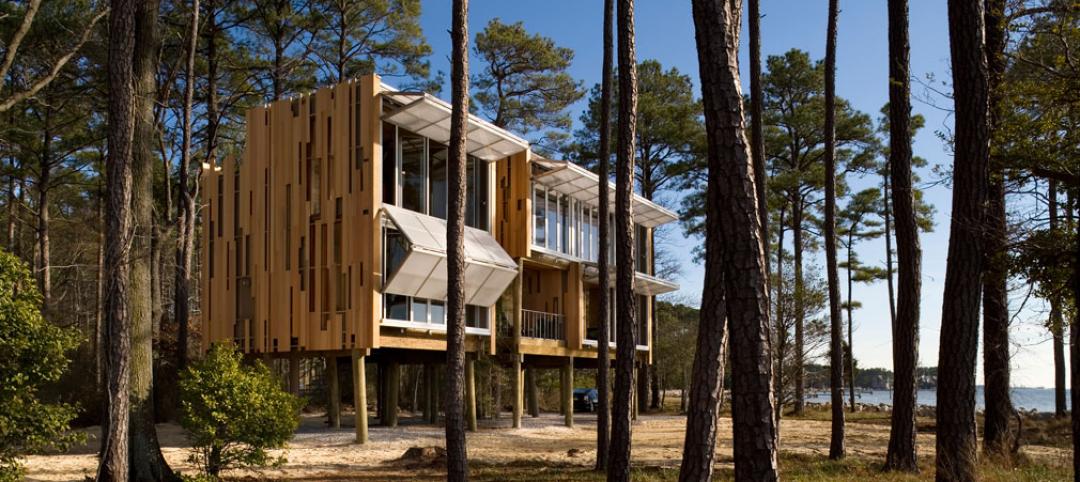A recent trend in the practice of architecture that I’ve been noticing is the blurring of responsibility between design and construction coordination. I’m not sure why this trend began, but the subject is worth exploring. Design and construction coordination is a complex issue and after grappling with the topic, I’ve determined the best way to delineate it is with the use of a “line.”
The “line” serves as reference point in time along the duration of a project. Figuratively, if we describe the entire chronology of a project as a string of events beginning from left to right, then the line that divides design from construction would occur in the center. On the left side of this line lives programming, schematic design, design development, and construction documents; design coordination resides here. On the right side lives construction procurement, logistics, permitting, scheduling, and labor management; the domain of construction coordination. The line in the center of the string represents the bidding period; a point of transition.
There was a time in the not so distant past when design coordination occurred mostly on the left side of this line. More recently though, parts of design coordination now occur on the right side. One way to view this is that the line has shifted to the left of center, making the design portion smaller and the construction segment larger.
This shifting of the line to the left has had the residual effect of reducing the amount of time architects have for design. In response, architects need to refocus efforts to restore equilibrium between design and construction coordination. This rebalancing represents both an opportunity and a challenge for architects to demonstrate how a renewed focus on design coordination may actually save the project time and money.
The first step toward reversion is to gain some understanding of why the line has moved to the left.
As expressed above, understanding this issue is complex at best. But if I had one shot at explaining it, I’d take my "line" analogy, turn it into an "arrow," and point it at BIM. It’s only speculation, but intertwined in my thinking are several concurrent ideas that shape the market view of what BIM can and cannot do. These include: 1) the client’s expectations of what the architect can do, 2) the architect’s (and consultant’s) understanding of what is actually possible, and 3) the construction manager’s aspirations for construction coordination. Add to the mix the desire to bid projects faster forcing portions of the project to be bid prior to full design coordination. As a result of this push, parts of design are performed on the construction side of the line. Combined, these forces and perceptions have diminished the clarity that once existed on both sides of the line.
The second step is to distinguish between design and construction coordination. In order to do this I’ve created a chart which approximates characteristics of both.

Putting aside this comparison, architect’s and consultant’s drawings are basically tools that convey the design intent of what we want built. However, it is the responsibility of the architect to use these tools to ensure that design coordination works, including engineering scope. Simply put, the architectural and engineering design must work congruently on the left side of the line.
But in reality, obfuscation between design and construction coordination usually occurs if the designer’s intent is not fully realized within the design sphere. At this point, a construction manager employing BIM for construction coordination can also use it to complete design coordination. As a result, the designer’s role is now performed within construction manager’s realm. However, this process creates inefficiencies due to an increase in RFIs and shop drawing resubmissions required to resolve construction coordination.
One way architects can restore equilibrium to both sides of the line is to view construction coordination as a test of design coordination. The purpose of this test is to ensure constructability of the design. When viewed through this lens, construction coordination is a process of challenging the design. But in order to pass this test, architects need to find ways to ensure design coordination within the traditional ‘design-bid-build’ delivery system.
If there is a misconception about BIM, it is probably that by using BIM the line can be shifted to the left and projects delivered faster. When used properly, BIM does allow a higher quality of coordination on both sides of the line. But if the objective is to deliver projects faster in a more cost-effective manner, then the answer to this is not BIM itself, but a newly integrated approach between architects and the construction industry which improves the flow of information on the left side of the line. Once achieved, architects will have shifted the line back to the center to allow proper time for design coordination. This might mean rethinking current integrated delivery systems so that questions are answered before the test is given.
About the Author
Mark Nusbaum, AIA, LEED AP, is a Senior Associate at FXFOWLE. He joined the firm's Cultural/Educational Studio in 2006 and was promoted to Senior Associate in 2013. Nusbaum has worked on a number of significant projects in the New York metropolitan area, including the Lincoln Center for the Performing Arts and Grand Central Terminal. More on Nusbaum.
Additional contributions by:
Tim Milam, Managing Director
Alex Pollock, Director of Design Technology
More from Author
FXCollaborative | Feb 23, 2015
Edge construction: The future of modular
Can innovative project delivery methods, namely modular construction, bring down costs and offer a solution for housing in urban markets? FXFOWLE’s David Wallance discusses the possibilities for modular.







